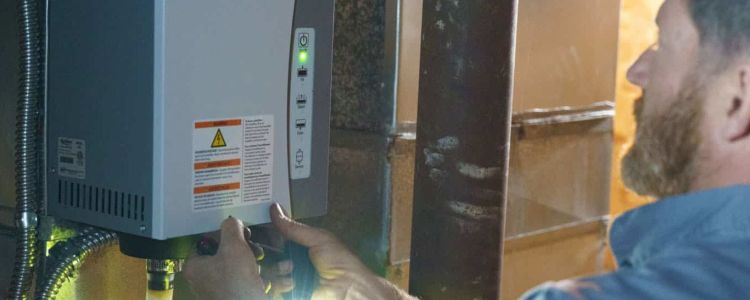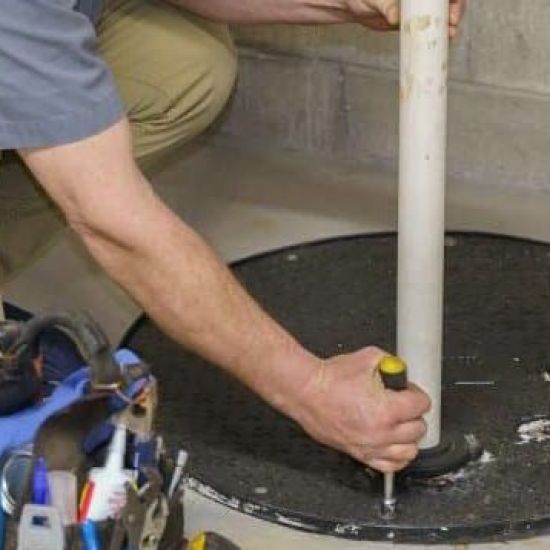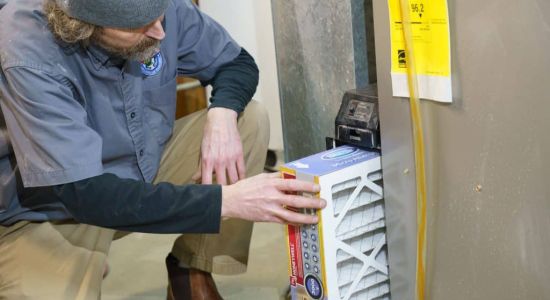Sewage Pump Services
No Salespeople, No Pressure
Thousands of 5-Star Reviews
We Help You Choose The Best
Helpful Financing Available
Some Signs That Your Sewage Pump Isn’t Working Properly
Your sewage pump is designed for longevity. However, like all plumbing components, parts eventually succumb to regular wear and tear. Mishandling the system or ignoring the first signs of a sewage pump malfunction can add to the issue and increase potential damage and costly repairs.
-
Dirty water coming from the taps
-
Foul odor
-
The pump won’t start or has trouble starting
-
The pump is constantly going off and on
-
New and unusual noises
-
An alarm is going off
Identifying the need for sewage pump repair early on is critical, as small problems can quickly accelerate and lead to bigger, more costly complications.
Needing expert sewage pump services?

What To Do If Your Alarm Float Sounds
- Stop using water.
- Check to make sure the circuit breaker for the sewage pump is not tripped off. If the breaker is tripped, turn it back on.
- If the breaker is not tripped, turn the breaker off and wait for 20 seconds, then flip the breaker back on. Sometimes this “on-off” action will help the pump tear through something if it is jammed. Wait for 60-90 seconds. If the alarm does not go off, immediately call Austin Plumbing Heating & Air at 262-295-7681.

Don’ts For Sewage Pump System
-
Don’t put any type of “wipes” in your plumbing system such as cleaning wipes or baby wipes, even though they may say “flushable” on the package.
-
Don’t put any type of disposable toilet bowl cleaning device in your plumbing system even though it may say “flushable” on the package.
-
Don’t put any type of feminine hygiene product in your plumbing system.
-
Don’t put any type of contraceptive device in your plumbing system.
-
Don’t pour out any grease, fats or oils into any drain.
-
Don’t bypass a broken float switch with direct power.
-
Don’t ignore signs of a partially clogged pipe, such as the pump running longer than it did in the past.
-
Don’t neglect to call a plumber if you notice the symptoms of a broken or malfunctioning pump.
Proper Care of Sewage Pumps
Maintenance of your sewage pump is important! Pumps that use floats to sense the level in the holding tank are prone to grease buildup that may turn the pump on unnecessarily, or not turn on the pump at all, causing the tank to fill up and sewage to back up into the home. To prevent this, regular yearly maintenance by Austin Plumbing Heating & Air is recommended.
-
How Sewage Pumps Work
With a sewage pump, liquid and solids are pumped from the house through a sewer or septic line to the septic tank. Raw sewage is collected in a large basin or reservoir and then pumped to the level of gravity flow. The sewage pump is controlled by a float system that detects water level. Austin Plumbing Heating & Air highly recommends that an alarm float be installed. An alarm float detects pump failure, alerting the homeowner before damaging back-up of sewage occurs.

THE DIFFERENCE BETWEEN SEWAGE & GRINDER PUMPS
Sewage pumps are automatic pumps used when the liquid being pumped contains solids up to 2″ in diameter. Pumping waste from a bathroom to a sewer or septic line is a common application. In fact, most homes that have a septic tank or mound system have a sewage pump installed in the basement.
Schedule Your Sewage Pump Service Today
From emergency service to routine maintenance or installations, Austin Plumbing is ready to take your call!
Call us now to schedule an appointment.